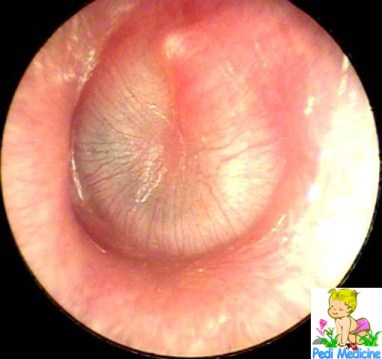
Acute Suppurative Otitis Media is most common in children of age between 3 to 7 years. Also can occur at any age. Direct bacterial or secondary to viral upper respiratory tract infections is the most common aetiological factors. It has some predisposing and risk factors which are described below. Otitis media is very common in children with the average toddler having two to three episodes a year. The common cold is usually followed by otitis media. An ear infection is common in all child.
What is Otitis Media?
it is an inflammation of part or all of the mucosa of the middle ear cleft. Middle ear cleft comprises of Eustachian tube, Tympanic cavity, Attic, Mastoid antrum, Mastoid air cells and Aditus.
Classification of Otitis Media:
It is in two types. Acute and chronic.
A. Acute Otitis Media or Acute Suppurative Otitis Media
B. Chronic Otitis Media
- Chronic Non-Suppurative Otitis Media/ Otitis Media with Effusion or Glue Ear.
- Chronic Suppurative Otitis Media with Cholesteatoma /Attico antral type.
- Chronic Suppurative Otitis Media without Cholesteatoma/ Tubo tympanic type.
- Chronic adhesive otitis media.
- Chronic Specific Otitis media.
Definition of Acute Suppurative Otitis Media:
Acute inflammation of the mucoperiosteal lining of middle ear cleft by pyogenic organism following most commonly a viral upper respiratory tract infection.
Routes of infection
- Via eustachian tube
- Via external ear
- Blood born
- Submucosal extension
Predisposing factors
- Rhinitis
- Sinusitis
- Nasopharyngitis
- Pharyngitis
- Tonsillitis
- Adenoids
- Nasopharyngeal tumour
- Nasal pack
- Cleft palate
Aetiology- Bacteriology
- Haemolytic streptococcus
- Strept.pneumoniae
- Staph. Aureus
- H. influenzae
Pathology
- Tubal occlusion
- Engorgement and oedema of the middle ear cleft lining
- Exudation follows
- Bulging of the T.M
- Rupture
- Hyperaemic decalcification
- Osteitis
- Subperiosteal abscess
Clinical Features:
Phase-I
Acute tubal obstruction
Fullness in the ear
Deafness
Retraction of the T.M
Phase-II
A. Acute infection of the tympanic cavity
B. Before perforation-
- Deafness increases
- Bubbling sound heard in the ear
- Discomfort progresses
- Earache
- Constitutional disturbances
- Malaise, Pyrexia, in children abdominal pain and diarrhea
Otoscopy
Tympani Membrane: – dilatation of blood vessels around the handle of malleus and periphery of the membrane. This increases until the whole membrane is red and lustreless. With the gradual loss of landmark as is thickens and bulges.

After perforation
- Otorrhoea
- Relief of pain
Phase III
- Retention of pus in the mastoid
- Pain develops in the mastoid region
- Tenderness over the mastoid area
- Oedema
- The posterosuperior wall of the deep meatus sags from oedema
- Constitutional disturbances increases.
Differential Diagnosis:
- Furuncle or defuse otitis externa
- Herpetic lesions of ear
- Referred otalgia
Sequelae:
- Complete resolution
- Chronic Suppurative Otitis Media
- Adhesive otitis media
- Tympano Sclerosis
Complications of Ear Infection:
Extracranial
- Chr.S.O.M.
- Mastoiditis
- Facial palsy
- Otitis externa
- Labyrinthitis
- Recurrent ASOM
- Septicemia
- Pyemia
Intracranial
- Pachy meningitis
- Leptomeningitis
- Subdural abscess
- Encephalitis
- Brain abscess
Chronic Nasal Granulomatous Disease Rhinosporodiosis
Treatment of Ear Infection:
Bed rest in the warm well-humidified room.
Phase I
- Antibiotic
- Nasal decongestant
- Antihistamine
Phase II –Preperforative
- Antibiotic
- Analgesic
- Antihistamine
- Nasal decongestant
Surgical:-Myringotomy & suction under Microscope
Post perforative stage
- Antibiotic
- Antihistamine
- Nasal decongestant
- Aural toileting
- Topical antibiotic drop
Phase III:- Treatment of complications
Decongestant Nasal Drops: Ephedrine nose drops (1 % in adults and 0.5% in children) or oxymetazoline or xylometazoline should be used to relieve eustachian tube oedema and promote ventilation of middle ear.
Ear toilet: If there is discharge in the ear, it is dry mopped with sterile cotton buds and a wick moistened with an antibiotic may be inserted.
Dry local heat: It helps to relieve pain. All cases of acute suppurative otitis media should be carefully followed till drum membrane returns to its normal appearance and conductive deafness disappears.
Helpful Links and PDF Download:
Acute Suppurative Otitis Media– Pediatrics.aappublications.org
http://pediatrics.aappublications.org/content/131/3/e964.full
Chronic Suppurative Otitis Media -www.patient.co.uk
Otitis media– Wikipedia
Thanks.
Leave a Reply